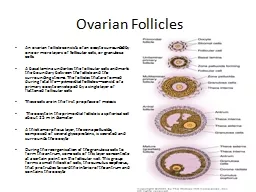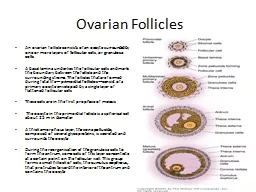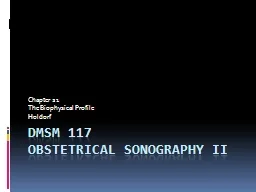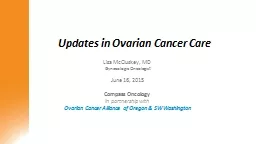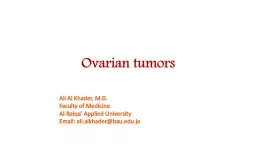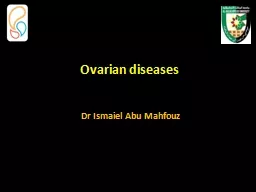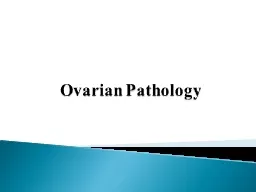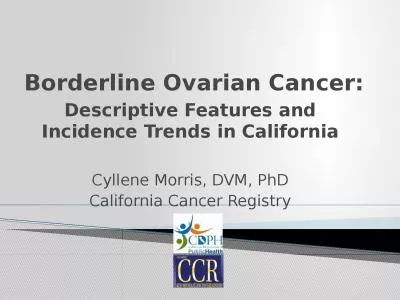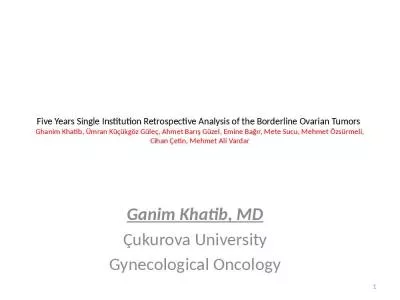PPT-Ovarian Tumors
Author : lindy-dunigan | Published Date : 2017-05-03
Ovarian cancer accounts for 3 of all cancers in females About 80 of ovarian tumors are benign and these occur mostly in young women between the ages of 20 and
Presentation Embed Code
Download Presentation
Download Presentation The PPT/PDF document "Ovarian Tumors" is the property of its rightful owner. Permission is granted to download and print the materials on this website for personal, non-commercial use only, and to display it on your personal computer provided you do not modify the materials and that you retain all copyright notices contained in the materials. By downloading content from our website, you accept the terms of this agreement.
Ovarian Tumors: Transcript
Download Rules Of Document
"Ovarian Tumors"The content belongs to its owner. You may download and print it for personal use, without modification, and keep all copyright notices. By downloading, you agree to these terms.
Related Documents



